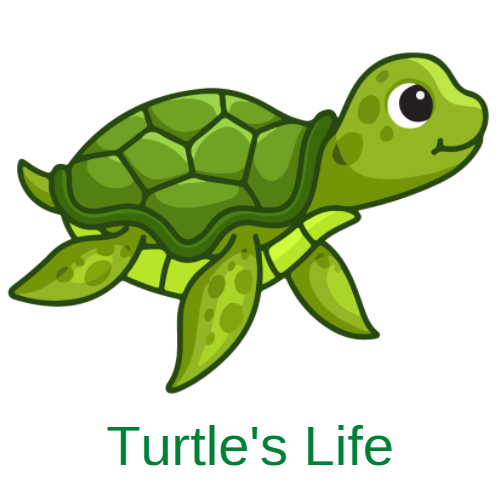
Introduction to Bog Turtles
Have you ever heard of a small, secretive creature called the Bog Turtle? These unique turtles are one of the smallest and rarest turtle species in North America. In this article, we will explore what Bog Turtles are, how to identify them, and much more. Let’s dive in!
-
Understanding the Bog Turtle
The Bog Turtle, scientifically known as Glyptemys muhlenbergii, is a small semi-aquatic turtle that is native to the eastern United States. These turtles are usually about 3 to 4 inches long, making them one of the smallest turtle species in North America. Bog Turtles are known for their distinctive orange, yellow, or red patches on each side of their necks.
These turtles are often found in wetland habitats, such as marshes, bogs, and swamps. They are omnivores, which means they eat both plants and small animals. Bog Turtles are known for their shy and secretive nature, making them difficult to spot in the wild.
-
Identifying the Bog Turtle
Identifying a Bog Turtle can be a bit tricky due to their small size and secretive nature. However, there are a few key characteristics that can help you recognize these unique creatures. First, look for their size. Bog Turtles are usually only about 3 to 4 inches long. Second, look for the distinctive orange, yellow, or red patches on each side of their necks. These patches are a key identifying feature of Bog Turtles.
Another identifying feature of Bog Turtles is their shell. Their upper shell, or carapace, is usually dark brown or black and has a slightly domed shape. Their lower shell, or plastron, is typically yellowish with dark markings. Remember, if you do spot a Bog Turtle in the wild, it’s important to observe it from a distance and not disturb it.
Now that you have a basic understanding of what Bog Turtles are and how to identify them, let’s move on to learn more about their behavior, habitat, and conservation efforts. Stay tuned!
Bog Turtle Behavior
Understanding the behavior of bog turtles can help us appreciate these unique creatures even more. Let’s dive into the typical behavior of bog turtles and some of their unique characteristics.
- Typical Bog Turtle Behavior
Bog turtles are known for their shy and secretive nature. They spend most of their time hiding in the mud or under vegetation in their wetland habitats. These turtles are diurnal, which means they are most active during the day, particularly in the morning when they come out to bask in the sun and warm their bodies.
When it comes to feeding, bog turtles are omnivores. They eat a variety of food, including insects, snails, worms, and even some types of plants and berries. They have a keen sense of smell which they use to locate their food.
Bog turtles are also known for their slow growth rate. It takes them about 8 to 11 years to reach maturity. During the breeding season, which is typically in the spring, males can become quite aggressive as they compete for females.
- Unique Characteristics of Bog Turtles
Bog turtles are one of the smallest turtle species in North America, with adults typically measuring only 3 to 4 inches in length. They have a distinctive orange, yellow, or red patch on each side of their neck, which makes them easily identifiable.
One unique characteristic of bog turtles is their longevity. Despite their small size, these turtles can live up to 40 years in the wild, and even longer in captivity. This is quite impressive considering the many threats they face in their natural habitats.
Another interesting fact about bog turtles is their hibernation behavior. During the cold winter months, they bury themselves in the mud and enter a state of hibernation. This allows them to survive the harsh conditions until the warmer spring weather arrives.
In conclusion, bog turtles are fascinating creatures with unique behaviors and characteristics. By understanding and appreciating these behaviors, we can better protect and conserve this endangered species.
Bog Turtle Habitat
Let’s dive into the fascinating world of bog turtles and explore their natural habitat. Understanding where these creatures live and the environment they thrive in is essential to their conservation.
- Where Do Bog Turtles Live?
- Understanding the Bog Turtle’s Environment
Bog turtles are native to the eastern United States. They are mostly found in the states of Georgia, Maryland, New York, and Pennsylvania. These turtles prefer to live in wetland areas, such as bogs, marshes, and swamps. They are often hidden away in the dense vegetation of these wetlands, making them somewhat difficult to spot.
The environment of a bog turtle is quite unique. They prefer wetlands with soft, muddy bottoms and plenty of vegetation. This provides them with ample food and hiding spots from predators. The water in their habitat is typically shallow, allowing them to easily navigate and find food. The temperature of their environment also plays a crucial role. Bog turtles are cold-blooded, which means they rely on the temperature of their surroundings to regulate their body temperature. They need a mix of sunny and shaded areas to maintain the right body temperature.
Here’s a quick summary of the key points about the bog turtle’s habitat:
| Location | Environment | Temperature |
|---|---|---|
| Eastern United States | Wetlands with soft, muddy bottoms and plenty of vegetation | Mix of sunny and shaded areas |
Understanding the habitat of the bog turtle is a crucial step towards their conservation. By preserving their natural environments, we can help ensure the survival of these unique creatures for generations to come.
Encountering a Bog Turtle
Stumbling upon a bog turtle in its natural habitat can be an exciting experience. These small, semi-aquatic creatures are a rare sight due to their declining population and secretive nature. However, it’s important to remember that our actions can significantly impact their well-being. Here’s what you should do if you happen to encounter a bog turtle.
What to Do When You See a Bog Turtle
- Stay Calm and Observe
- Do Not Disturb
- Report the Sighting
Firstly, it’s crucial to remain calm. Rapid movements can startle the turtle, causing it stress. Instead, take a moment to appreciate the rare opportunity to observe this elusive creature in its natural environment. Note its size, color, and any unique markings. These details can be useful for identification and reporting purposes.
Resist the urge to touch or pick up the turtle. Bog turtles are sensitive creatures, and human interaction can disrupt their normal behavior and potentially harm them. Remember, we are visitors in their habitat, and it’s our responsibility to respect their space.
After observing the turtle, make sure to report your sighting to local wildlife authorities or a turtle conservation organization. Your report can contribute valuable data to ongoing research and conservation efforts. When reporting, provide as many details as possible about the turtle and its location.
Encountering a bog turtle can be a memorable experience, but it’s important to prioritize the turtle’s safety and well-being. By staying calm, not disturbing the turtle, and reporting the sighting, you can contribute to the conservation of this fascinating species.
Bog Turtle Conservation
Conserving the bog turtle, one of the smallest and most endangered turtles in North America, is a critical task that requires our collective efforts. Here are some ways we can contribute to the protection of these unique creatures.
Protecting Bog Turtles
Protecting bog turtles involves more than just caring for the turtles themselves. It also includes preserving their habitat, supporting conservation efforts, and spreading awareness about their plight. Let’s delve into these aspects.
- Support Conservation Efforts
- Respect Their Habitat
- Spread Awareness
Conservation organizations are at the forefront of protecting bog turtles. They work tirelessly to preserve habitats, conduct research, and rehabilitate injured turtles. You can support these efforts by donating money or volunteering your time. Every little bit helps in the fight to save these fascinating creatures.
Bog turtles live in specific wetland habitats. Destruction of these habitats is one of the main reasons for their declining numbers. When visiting these areas, make sure to stay on marked trails and avoid disturbing the wildlife. Remember, we are guests in their home.
Many people are unaware of the bog turtle’s existence, let alone its endangered status. You can help by educating others about these turtles and the threats they face. Share information on social media, talk to your friends and family, or even organize a local event to raise awareness.
In conclusion, each of us has a role to play in the conservation of bog turtles. By supporting conservation efforts, respecting their habitat, and spreading awareness, we can contribute to the survival of this remarkable species.
| Conservation Efforts | Respecting Habitat | Spreading Awareness |
|---|---|---|
| Donate or volunteer with conservation organizations | Stay on marked trails and avoid disturbing wildlife | Share information on social media and talk to friends and family |
Additional Information on Bog Turtles
As we delve deeper into the fascinating world of bog turtles, we will explore some interesting case studies and key conservation takeaways. These will provide a more comprehensive understanding of these tiny, yet remarkable creatures.
-
Case Studies on Bog Turtle Sightings
Case studies offer valuable insights into the behavior and habitats of bog turtles. Let’s look at some interesting examples:
-
Case Study 1: The New Jersey Wetlands
In 2010, a group of researchers discovered a small population of bog turtles in the wetlands of New Jersey. Despite the harsh winter, these turtles had adapted to the cold by burrowing deep into the mud. This case study highlights the resilience and adaptability of bog turtles. -
Case Study 2: The Pennsylvania Meadows
In a meadow in Pennsylvania, a bog turtle was sighted basking in the sun. This sighting is significant as it indicates that bog turtles can also thrive in meadow habitats, not just wetlands.
-
-
Key Takeaways on Bog Turtle Conservation
Conservation efforts are crucial for the survival of bog turtles. Here are some key takeaways:
-
Takeaway 1: Habitat Protection
Protecting and restoring the natural habitats of bog turtles is crucial. This includes wetlands, meadows, and marshes. -
Takeaway 2: Public Awareness
Raising public awareness about the plight of bog turtles can help garner support for their conservation. Education about their importance in the ecosystem can encourage more people to join conservation efforts. -
Takeaway 3: Legal Protection
Legal protection can prevent the illegal trade of bog turtles. Strict enforcement of wildlife laws can deter potential poachers.
-
Conclusion
-
Recap of Bog Turtle Information
Throughout this article, we’ve learned a lot about the fascinating Bog Turtle. We’ve discovered that they are one of the smallest and most endangered turtles in North America. They have a unique behavior, preferring to live in wetlands and bogs, hence their name. Their diet mainly consists of insects, mollusks, and small fish.
We also learned about their habitat, which is under constant threat due to human activities such as development and pollution. This has led to a significant decrease in their population, making them a critically endangered species. However, there are conservation efforts in place to protect and preserve their habitats.
Finally, we discussed what to do when encountering a Bog Turtle. It’s essential to observe them from a distance and never disturb their natural habitat. If you come across a Bog Turtle, it’s best to report the sighting to local wildlife authorities to aid in their conservation efforts.
-
Final Thoughts on Encountering a Bog Turtle
Encountering a Bog Turtle in the wild can be an exciting experience. However, it’s crucial to remember that they are a protected species and should be treated with respect. We all have a role to play in their conservation. By understanding their behavior, habitat, and the threats they face, we can help ensure their survival for future generations.
Remember, the Bog Turtle is more than just a creature; it’s a symbol of our wetlands and a reminder of the delicate balance of our ecosystem. Let’s do our part to protect these tiny, yet significant creatures.














